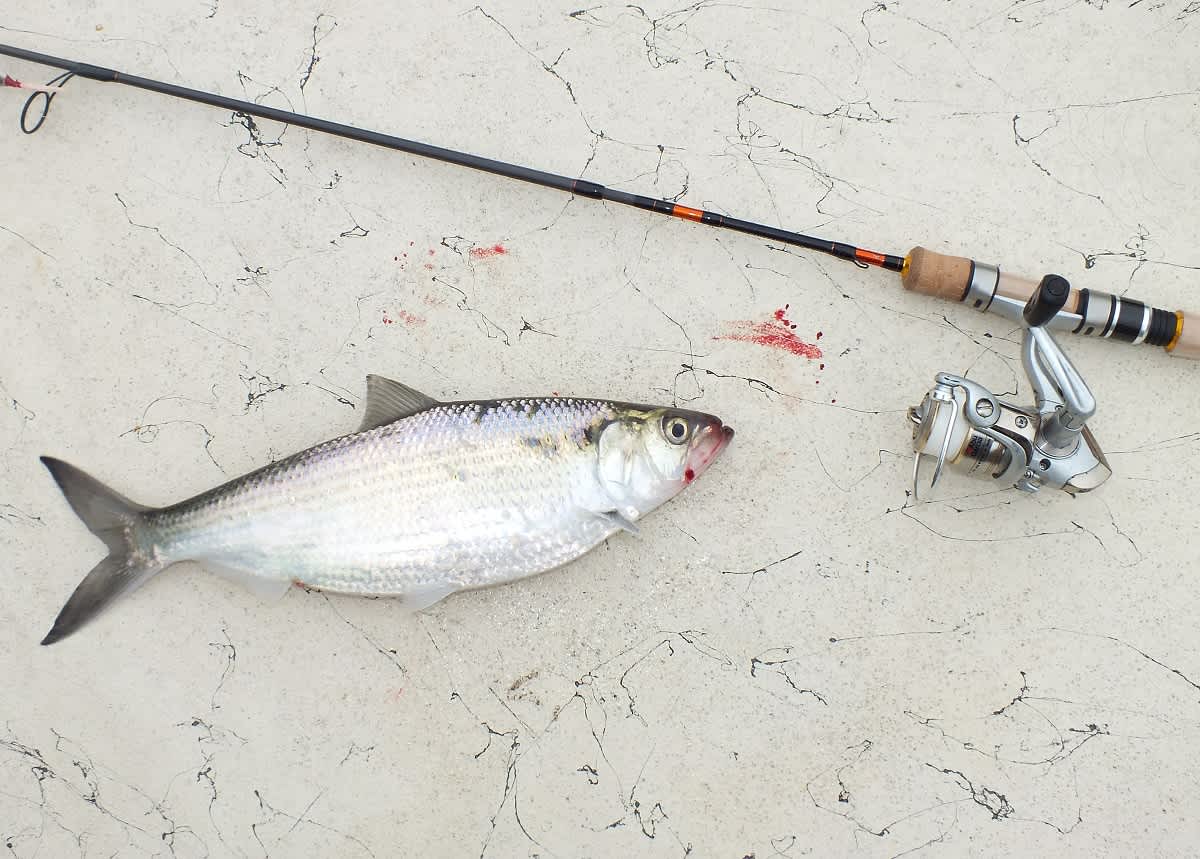Daiwa Presso Ultralight Spinning Rod
Lewis Creek Shooting School 04.28.14

We anchored up and fished for about 20 minutes before hooking the first fish. Jeff then boated two small male hickory shad in two casts, and they shut off again. Then, as the clouds cleared, the fishing began in earnest and we were catching spawning shad on almost every cast. From time to time, the school would move on and the action would stop, but it would then start again, and as the day passed, the fish got bigger and bigger. My grandson, Charlie, managed to catch two fish on one rig twice, one on the dart and one on the trailing spoon. This earned him him a new moniker: “Two Time” Charlie.
We were on the Roanoke River just a mile or so below the Weldon, North Carolina, boat ramp, and we were there for the hickory shad spawning run. Hickory shad, a smaller cousin to the more common American shad, can be caught on a variety of lures but a standard shad rig consists of a small jig called a dart and a small spoon. Individual small spoons and jigs work well, but rigging two lures as a trailer rig seems to work best. In the Roanoke during striper season, you can only use single barbless hooks, or regular hooks with the barb mashed down.
This kind of fishing requires an ultralight rod since the lures normally weigh just 1/8-ounce. I was fishing with the prefect rod for the job: Daiwa’s new 6-1/2-foot Presso series spinning pack rod. Teamed with an ultralight reel and 150 yards of eight pound braid, I could easily toss the 1/8-ounce jigs halfway across the river, yet still handle a serious fish. The best part is the Presso is as light as a feather, tipping my scales at just under three ounces. In the old days, a pack rod was convenient to travel with, but awkward to actually fish with. This was not the case with the Presso—it’s light and lively without the sluggish feel many pack rods have. I recently took it on a trip to Lake Charles, Louisiana, thinking I might get a chance to fish. The weather prevented a fishing trip but there was no inconvenience in carrying the rod; broken down, it fit easily in my suitcase and hardly took up any room at all.
On the Roanoke trip, I had plenty of chances to see how the Presso handles a fish. The smallest of the hickories were about 14 inches, but the larger females pushed 20 inches—and hickory shad are known for making a good showing in the fighting department. They slug it out deep until they begin to lose the fight and then jump like miniature tarpon. While the Presso feels as light as a feather, it has plenty of backbone to handle larger fish. I wouldn’t be intimidated to use it for slot-sized redfish or stripers.
It’s amazing just how much rod your money will buy these days. The Presso PSO664ULFS-TR has IM-7 Graphite construction, a Minima reel seat with a machined clamp nut, and a woven graphite insert. It also has seven lightweight Minima black ring guides and lightweight split grip cork handles. Black with gold trim, it’s a beautiful little rod. Selling for under $90, five years ago, a rod of this quality would have been twice the price. I’ve already decided I’m going to land some stripers on it once they make their spawning run on the Roanoke.

